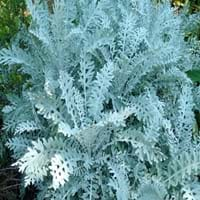Life Span
Perennial
Annual and Perennial
Type
Bulb or Corm or Tuber
Tender Perennial
Origin
South America
Southern Europe, Mediterranean
Types
Pamianthe cardenasii , Pamianthe parviflora , Pamianthe peruviana
Silver Lace, Cirrus
Habitat
All sorts of environments
Coastal Regions, Warmer regions
USDA Hardiness Zone
8-10
7-11
Sunset Zone
21,22
H1, H2, 8, 9, 10, 11, 12, 13, 14, 15, 16, 17, 18, 19, 20, 21, 22, 23, 24
Habit
Clump-Forming
Cushion/Mound-forming
Flower Color
White
White, Yellow, Purple
Flower Color Modifier
Bicolor
Bicolor
Leaf Color in Spring
Dark Green
Blue Green, Silver
Leaf Color in Summer
Light Green
Blue Green, Silver
Leaf Color in Fall
Several shades of Green
Blue Green, Silver
Leaf Color in Winter
Light Green
Light Green
Leaf Shape
Strap shaped
Irregular
Plant Season
Spring, Summer, Fall
Spring, Summer, Fall, Winter
Sunlight
Partial Sun, Partial shade
Full Sun
Type of Soil
Loam, Sand
Clay, Loam, Sand
The pH of Soil
Acidic, Neutral, Alkaline
Acidic, Neutral, Alkaline
Soil Drainage
Average
Well drained
Bloom Time
Spring, Late Spring, Early Summer, Summer, Late Summer
Early Summer, Summer, Late Summer
Tolerances
Drought
Drought
Where to Plant?
Ground, Pot
Container, Ground
How to Plant?
Offsets
Seedlings, Stem Planting
Plant Maintenance
Medium
Medium
Watering Requirements
Keep the ground moist but not water-logged
Do Not over Water, Never Over-water, Requires regular watering, Requires watering in the growing season, Water Deeply
In Summer
Lots of watering
Lots of watering
In Spring
Moderate
Moderate
In Winter
Average Water
Average Water
Soil pH
Acidic, Neutral, Alkaline
Acidic, Neutral, Alkaline
Soil Type
Loam, Sand
Clay, Loam, Sand
Soil Drainage Capacity
Average
Well drained
Sun Exposure
Partial Sun, Partial shade
Full Sun
Pruning
Pinch or prune as they grow to promote branching and bushiness, Remove damaged leaves, Remove dead branches, Remove dead leaves, Requires little pruning
Remove dead leaves, Remove deadheads
Fertilizers
All-Purpose Liquid Fertilizer, High phosphorus
fertilize every 2-3 weeks while growing, Nitrogen, Phosphorous, Potassium
Pests and Diseases
Leaf spot, Mosaic viruses
Blight, Downy mildew, Powdery mildew, Red blotch, Rust, White mold
Plant Tolerance
Drought
Drought
Flowers
Showy
Insignificant
Flower Petal Number
Single
Single
Foliage Texture
Coarse
Medium
Foliage Sheen
Glossy
Matte
Attracts
Bees, Birds, Bumblebees, Butterflies, Hummingbirds, pollinators
Flying insects, Insects
Allergy
Unknown
Avoid during Pregnancy, Skin irritation, Skin rash, Toxic
Aesthetic Uses
Beautification, Bouquets, Ornamental use, Showy Purposes
Showy Purposes
Beauty Benefits
No Beauty Benefits
No Beauty Benefits
Environmental Uses
Air purification
Air purification, Food for insects, Prevent Soil Erosion
Medicinal Uses
No Medicinal Use
Headache, Menstrual Disorders, Migraines
Part of Plant Used
Not Available
Leaves
Other Uses
Beneficial species for attracting pollinators, Decoration Purposes
Employed in herbal medicine, Showy Purposes, Used as Ornamental plant, Used for its medicinal properties
Used As Indoor Plant
No
Yes
Used As Outdoor Plant
Yes
Yes
Garden Design
Bog Garden, Container, Feature Plant, Foundation, Mixed Border, Water Gardens
Bedding Plant, Container, Cutflower, Edging, Mixed Border, Rock Garden / Wall
Botanical Name
HYMENOCALLIS longipetala
CENTAUREA cineraria
Common Name
Peruvian Daffodil, Spiderlily
Silver dust
In Hindi
peruvian daffodil
डस्टी मिलर
In German
peruvian daffodil
Dusty Miller
In French
peruvian daffodil
Dusty Miller
In Spanish
Pamianthe
Dusty Miller
In Greek
peruvian daffodil
Dusty Miller
In Portuguese
peruvian daffodil
Dusty Miller
In Polish
peruvian daffodil
Dusty Miller
In Latin
peruvian daffodil
Dusty Cicero
Phylum
Magnoliophyta
Anthophyta
Class
Liliopsida
Magnoliopsida
Order
Asparagales
Asterales
Family
Amaryllidaceae
Asteraceae
Genus
Pamianthe
Centaurea
Clade
Angiosperms, Monocots
Angiosperms, Asterids, Eudicots
Tribe
Clinantheae
Cynareae
Subfamily
Amaryllidoideae
Carduoideae
Number of Species
Not Available
Not Available
Season and Care of Peruvian Daffodil and Dusty Miller
Season and care of Peruvian Daffodil and Dusty Miller is important to know. While considering everything about Peruvian Daffodil and Dusty Miller Care, growing season is an essential factor. Peruvian Daffodil season is Spring, Summer and Fall and Dusty Miller season is Spring, Summer and Fall. The type of soil for Peruvian Daffodil is Loam, Sand and for Dusty Miller is Clay, Loam, Sand while the PH of soil for Peruvian Daffodil is Acidic, Neutral, Alkaline and for Dusty Miller is Acidic, Neutral, Alkaline.
Peruvian Daffodil and Dusty Miller Physical Information
Peruvian Daffodil and Dusty Miller physical information is very important for comparison. Peruvian Daffodil height is 61.00 cm and width 61.00 cm whereas Dusty Miller height is 20.30 cm and width 30.50 cm. The color specification of Peruvian Daffodil and Dusty Miller are as follows:
Peruvian Daffodil flower color: White
Peruvian Daffodil leaf color: Dark Green
Dusty Miller flower color: White, Yellow and Purple
- Dusty Miller leaf color: Blue Green and Silver
Care of Peruvian Daffodil and Dusty Miller
Care of Peruvian Daffodil and Dusty Miller include pruning, fertilizers, watering etc. Peruvian Daffodil pruning is done Pinch or prune as they grow to promote branching and bushiness, Remove damaged leaves, Remove dead branches, Remove dead leaves and Requires little pruning and Dusty Miller pruning is done Remove dead leaves and Remove deadheads. In summer Peruvian Daffodil needs Lots of watering and in winter, it needs Average Water. Whereas, in summer Dusty Miller needs Lots of watering and in winter, it needs Average Water.





